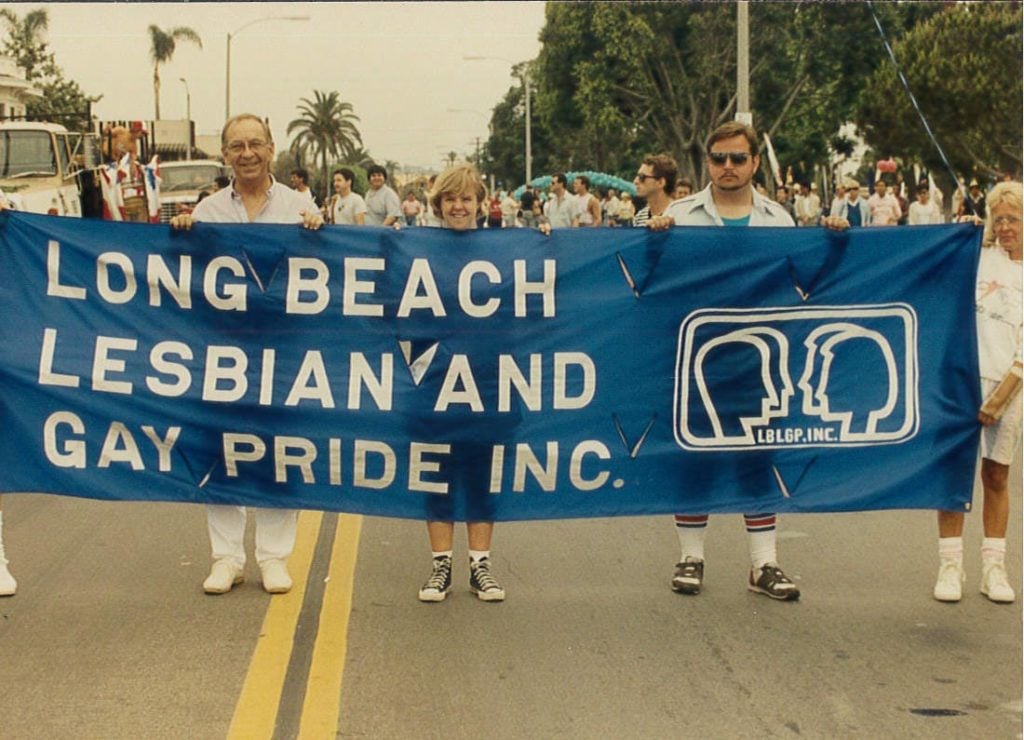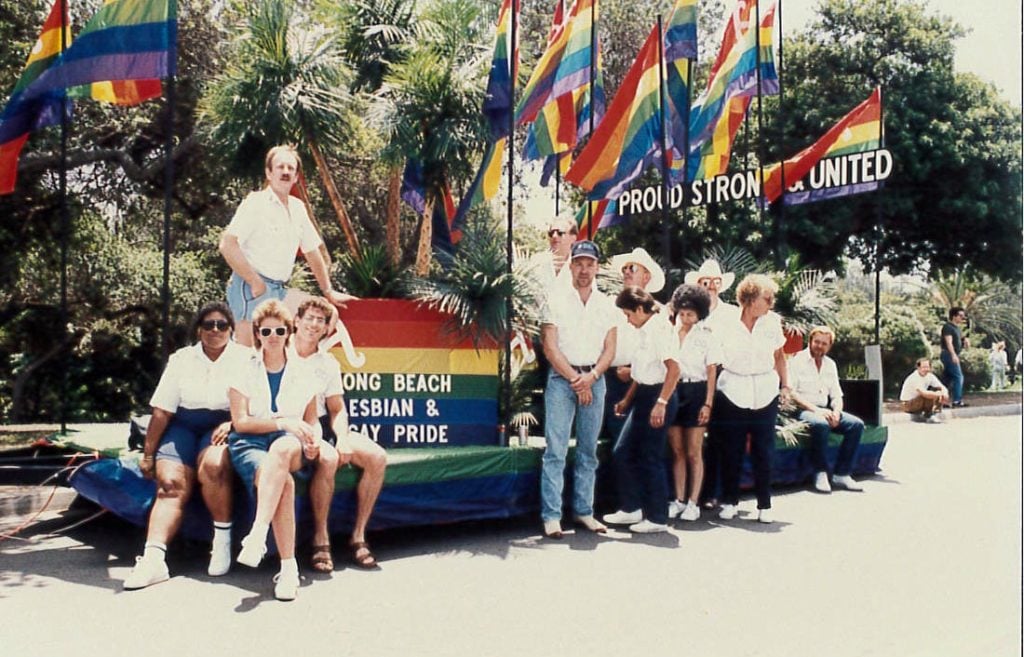LONG BEACH – Judi Doyle celebrated Long Beach Pride by wearing a bulletproof vest in the parade.
Long Beach Gay and Lesbian Pride, the nonprofit that organizes the festival and parade, was formed in 1983 and held its first parade in 1984 with little anti-gay backlash.
But in the days leading up to the parade in 1985, Judi Doyle, then president of the organization, received an ominous voice message on the pride office answering machine.
The caller suggested that Doyle would be shot if she marched in the parade.
“It was chilling and frightening,” said Doyle, 74, in an interview. “But they weren’t very articulate.”
Doyle reported the call to the Long Beach Police Department, who told her she couldn’t march in the parade without a bulletproof vest.

Members of Long Beach Lesbian and Gay Pride march in a parade in the mid 1980s. Photo: Long Beach Lesbian and Gay Pride.
After the threat, the pride board had to vote on whether or not the group would march in the parade, Doyle said.
“There was no way we would not march. The board affirmed that, not that there wasn’t a sense of fear,” Doyle said. “But what came with the fear was a sense of anger.
“We weren’t going to be told that we need to sit in the back of the bus anymore. We will not let the community be stopped or put down anymore,” Doyle said.
“Just imagine how any group would feel if you were denied the rights that everyone else in America had,” she said. “A large section of society felt they could attack us or put us down.
Doyle wore a bulletproof vest, but no shots were fired, though some people threw eggs at the marchers, Doyle said.
FESTIVAL, PARADE BEGINNINGS
The festival and parade started as an effort by the local gay community to make its own identity while living in the shadow of Los Angeles’ pride event, which started in 1970.
The first parade lasted just 30 minutes, and the two-day festival drew 5,000 people to Palm Island, which was located at the end of Pine Avenue in what is Shoreline Drive.
From the beginning, the city went out of its way to block the parade.
“The city tried a variety ways to make us go away,” Doyle said. “But we weren’t going away without a fight.”
The festival always has been scheduled the weekend before Memorial Day because the city didn’t want it held during the summer season, which begins with Memorial Day weekend.
As a result, the city banned all private events in the park after Memorial Day.

Members of Long Beach Lesbian and Gay Pride stand next to the float they entered during a parade in the mid 1980s. Photo: Long Beach Lesbian and Gay Pride.
DISCRIMINATION LAWSUIT
In 1985, organizers were told by the city that they needed $1 million in liability insurance to have the parade. A national search failed to find a company willing to back the event, but festival organizers got a court injunction and held the parade without a permit.
When organizers found out the city waived or reduced the insurance requirement for other groups, Long Beach Pride, with the help of the ACLU, sued the city, claiming discrimination.
Organizers did find liability insurance for the parade in 1987 and subsequent years.
PRIDE WINS LAWSUIT
In 1990, pride’s lawsuit against the city went to court. In 1991, a Los Angeles Superior Court judge ruled that Long Beach’s ordinance requiring liability insurance on the basis of a parade’s subject matter was unconstitutional and violated the 1st Amendment. The city appealed the decision, but the California Court of Appeals upheld the lower court ruling.
The city eventually agreed to develop uniform requirements for all groups staging large events.
More than three decades later, Doyle says the parade is as relevant as ever.
“I don’t see the parade as antiquated. It’s an ongoing expression of a part of the community. It’s an ongoing celebration of our lives,” she said.
“We are still a part of the community.We are there in pride,” Doyle said. “Finally proud to be who we are and a part of our community.”
